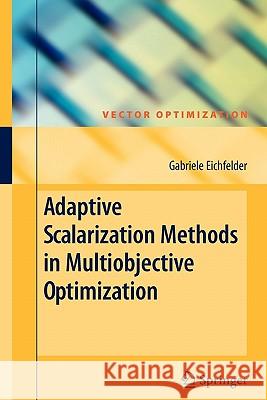Adaptive Scalarization Methods in Multiobjective Optimization » książka
Adaptive Scalarization Methods in Multiobjective Optimization
ISBN-13: 9783642098048 / Angielski / Miękka / 2010 / 241 str.
In many areas in engineering, economics and science new developments are only possible by the application of modern optimization methods. Theoptimizationproblemsarisingnowadaysinapplicationsaremostly multiobjective, i.e. many competing objectives are aspired all at once. These optimization problems with a vector-valued objective function have in opposition to scalar-valued problems generally not only one minimal solution but the solution set is very large. Thus the devel- ment of e?cient numerical methods for special classes of multiobj- tive optimization problems is, due to the complexity of the solution set, of special interest. This relevance is pointed out in many recent publications in application areas such as medicine ( 63, 118, 100, 143]), engineering( 112,126,133,211,224], referencesin 81]), environmental decision making ( 137, 227]) or economics ( 57, 65, 217, 234]). Consideringmultiobjectiveoptimizationproblemsdemands?rstthe de?nition of minimality for such problems. A ?rst minimality notion traces back to Edgeworth 59], 1881, and Pareto 180], 1896, using the naturalorderingintheimagespace.A?rstmathematicalconsideration ofthistopicwasdonebyKuhnandTucker 144]in1951.Sincethattime multiobjective optimization became an active research ?eld. Several books and survey papers have been published giving introductions to this topic, for instance 28, 60, 66, 76, 112, 124, 165, 188, 189, 190, 215]. Inthelastdecadesthemainfocuswasonthedevelopmentofinteractive methods for determining one single solution in an iterative process.











